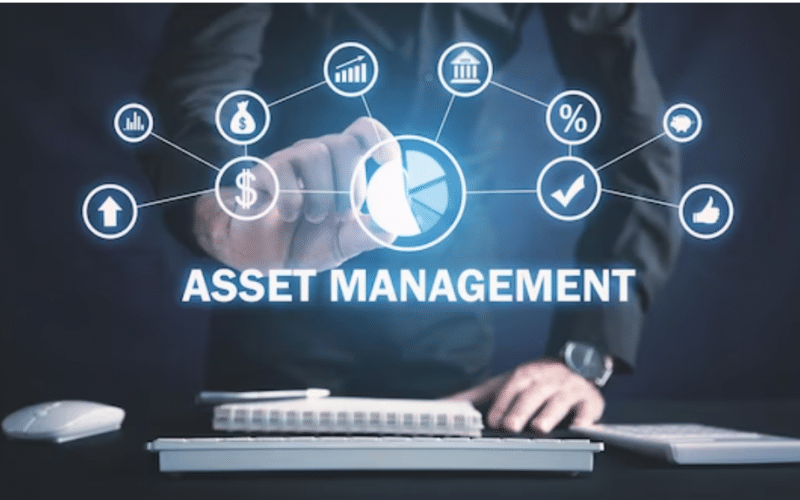EAM Software solutions are used by industries relying on physical assets for asset control and measurement. This guide explores Enterprise Asset Management, focusing on maximizing asset usability, reducing expenses, improving maintenance processes, and enhancing workflow quality and efficiency.
What Is Enterprise Asset Management?
An enterprise asset management system (EAM) is crucial for asset-intensive enterprises, as it provides clarity on asset status, workflows, and operators. EAM software maintains an accurate asset register and correlates with movements, ensuring asset uptime is crucial for survival and growth.
EAM software is typically used to manage:
- complex machinery and equipment.
- production facilities.
- office structures.
- fleet on land, air, and sea.
Industries that frequently employ EAM software include:
- Automotive.
- Manufacturing.
- Mining.
- Coal, nuclear, oil, gas, and renewable energies are all used in the production of energy.
- Physical merchants, transporters, and pipeline firms that distribute energy.
- Aerospace.
Furthermore, asset-intensive companies utilize EAM systems to enhance asset management, addressing every stage of an asset’s life cycle. Additionally, these systems utilize sensors, machine learning, and manual intervention to understand asset conditions and recommend uptime strategies. The best EAM tools offer asset register rigidity and workflow flexibility, enhancing enterprise asset management.
What Are The Components Of EAM?
#1. Work Management
Work management involves managing assets, including maintenance requests, scheduled maintenance, and coordination between teams. Additionally, work order management simplifies schedule coordination and prevents overlaps or errors. Therefore, proper management is crucial for a proper business function, as improper asset management can lead to supply issues, downtime, and inferior performance.
#2. Asset Management
Asset management within EAM involves managing all aspects of the lifecycle in one location, streamlining processes, and improving communication. This streamlines processes by using central software to track procurement, acquisition, maintenance, operation, and disposal, ultimately improving efficiency, saving money, and increasing success.
#3. Labor Management
Labor management involves tracking and managing all labor force components, saving money and reducing HR, management, and compliance burdens. Additionally, an EAM system stores information on hiring, scheduling, training, certification, and licensure, ensuring timely changes and reducing audit burdens.
#4. MRO (Maintenance, Repair, Operations) Management
MRO management involves managing inventory for asset creation, management, and maintenance. EAM streamlines supply chain management by controlling purchasing, stock, spare parts, and material procurement demands. Therefore, proper asset management is crucial for efficient processes and equal supply and demand.
#5. Contract Management
Contract management involves managing contracts for business functions, including clients, vendors, partners, and employees. Traditionally, these contracts were managed by different departments, creating a fragmented system. EAM software provides a central location for all contracts, including financial agreements and payment details. Note that a strong contract management procedure enhances payment accuracy and speed.
#6. Analytics and Reporting
Analytics and reporting are crucial tools for business growth, streamlining processes, and creating successful companies. EAM provides a central location for various reports, tracks key performance indicators (KPIs), and identifies issues early. Additionally, custom reports and dashboards can track specific areas or measures, contributing to process improvement.
#7. Financial Management
Financial management involves monitoring expenditures across departments for success. EAM compiles data and stores it in a central location, allowing finance departments to focus on more important tasks rather than relying on spreadsheets or multiple software programs.
Who Uses EAM?
#1. Managers of growing businesses:
EAM software adoption is expected to grow faster in the SME segment from 2019 to 2024, with SMEs seeking efficiencies and cost savings. They aim to prevent equipment breakdowns and improve asset life. Cloud-based EAM software is a welcome trend for managers of SMEs, as it eliminates hardware investments and allows for remote maintenance tasks. This trend aims to improve asset life and reduce maintenance costs.
#2. Managers of large enterprises:
Managers of large enterprises rely on EAM software to streamline operations and see the big picture. They aim to use asset management details to inform business strategy, track key performance indicators (KPIs), and integrate multiple functions into a cohesive system.
EAM software offers the biggest benefits for these enterprises, such as production companies with many locations and multiple subsidiaries. Therefore, by reducing unscheduled maintenance by 65% and providing access to business intelligence, EAM software can enable these large firms to improve their KPIs and streamline operations.
#3. Business leaders:
EAM software is essential for maintenance managers in heavy machinery industries, such as construction and manufacturing, to ensure assets comply with safety codes and industry regulations. By using EAM software, maintenance managers can save on fines and ensure regular inspections of cranes.
Additionally, it also benefits corporate real estate leaders accountants, who need to report operating leases in financial statements and provide detailed information about assets. Enterprise asset management solutions can handle these calculations, providing greater visibility into complex data.
#4. Maintenance managers and field technicians:
Maintenance managers and field technicians make use of asset management software for asset health and maintenance programs. Additionally, it is also used by reliability managers, facility managers, safety supervisors, inventory managers, line supervisors, and machine technicians.
Furthermore, EAM software provides visibility into key metrics, aiding procurement, materials management, and accounting departments in planning budgets, complying with regulations, and preparing audit documentation. Data analysts analyze asset life cycles and improve workflows, while business leaders make informed decisions with real-time data.
What Are The Benefits Of EAM?
Enterprise asset management (EAM) aims to maintain profitable assets for businesses, giving them a competitive advantage. A good EAM system provides a detailed overview of a business’s fixed asset repository, enabling future planning and identifying priorities like finance, skills, materials, or data.
Businesses can benefit from the use of EAM in several ways right away. Automated tools seek to improve
- Commissioning and planning
- Financial and accounting management
- Management of operations, upkeep, and services
- Supply chain management, stock ordering, and inventory control
- scheduling, timekeeping, and space administration
Additionally, EAM technologies can support more intricate processes like maintenance planning and warranty administration. It can facilitate activity standardization and improve the links between organizational strategy and day-to-day operations.
What Are The Roles And Responsibilities Of EAM Consultants?
RESPONSIBILITIES AND REQUIREMENTS
- Asset Management consulting experience in the IT sector
- Compiling data from various sources, analyzing it critically, resolving disagreements, transforming high-level information into specifics, and separating user requests from actual needs.
- Prior experience with Infor EAM software implementation projects is preferred.
- Interpreting client business requirements and incorporating them into the application with the assistance of strong analytical and product management abilities.
- Proactively engaging in dialogue and collaboration with clients to assess their information needs, producing use cases and solution designs as and when needed, and fulfilling functional requirements.
- Testing the new system’s functionality and taking part in user acceptance testing.
- Holding discussions with project managers to clarify concepts and utilizing corporate standards systems for definition and management.
- Offers team members leadership, encouragement, and direction.
- Expertise in the asset management sector.
- A track record of completing projects on time.
- Offer knowledge of industry standards and best practices for enterprise asset management, including reliability, and proactive maintenance techniques.
- Assist with oral presentations to current and potential clients and RFP responses.
- Explain to the executive leadership the main objectives, the roles involved, and the final deliverables.
- Takes part in the execution of corporate initiatives, procedures, and strategies.
What Is The Difference Between Enterprise Asset Management And Asset Management?
#1. Focus
Maintenance, purchasing, and retirement are all covered by EAM, which is a comprehensive approach to asset management. APM, on the other hand, uses techniques to improve availability and uptime while concentrating exclusively on improving asset performance and reliability.
#2. Scope
Assets of various kinds, from machinery and equipment to infrastructure and facilities, are covered by EAM. APM, on the other hand, primarily concentrates on vital assets that have a substantial influence on corporate operations.
#3. Objectives
EAM strives to increase total asset management efficiency, optimize assets, cut costs, and assure compliance with regulations. APM works to improve the efficiency of assets, boost dependability, reduce equipment breakdowns, and maximize maintenance plans.
What Is The Difference Between CMMS And EAM?
CMMS and EAM systems share similar purposes and functionality but differ in philosophy and scope. CMMS focuses on maintenance, while EAM systems take a comprehensive approach, incorporating multiple business functions.
Furthermore, CMMS is designed for a single location or limited multisite support, while EAM systems offer extensive features for managing multiple sites and businesses. EAM systems are integrated with various management systems, including inventory, purchasing, document, accounting, project, multisite, performance, and BI tools. Organizations serious about asset management rely on EAM systems for their comprehensive, powerful, and unified feature set.
Therefore, it is misleading to describe a CMMS as an EAM system, as they represent two different approaches to asset management.
What Is EAM In Wealth Management?
Enterprise Asset Management (EAM) is a concept that focuses on managing physical assets throughout their lifecycle, including machinery, equipment, infrastructure, and facilities. While EAM is primarily focused on physical assets, it can also be applied to financial assets like investments, securities, and portfolios.
Top 19 Enterprise Asset Management Software
#1. Maximo Application Suite
IBM’s Enterprise Assets Management Software is highly scalable, easy to deploy, and easy to optimize asset performance. It automates and unifies operations, allowing for easy management and monitoring. Additionally, it has a 5-star rating and is compared to SAP, Oracle, and Microsoft.
#2. UpKeep Asset Operations Platform
UpKeep is a great program focused on continuous improvement, offering customizable settings and new features for maintenance programs. It has a 5- star rating and is compared to SAP, Fluke, and Oracle.
#3. SAP ERP Suite (EAM)
SAP ERP Suite is a leader in ERP software with extensive features and advancements, including pre-existing integrations with payment processors and order processing. It has a 5-star rating and is compared to IBM, Oracle, and Microsoft.
#4. IFS Cloud
IFS is a reliable and efficient ERP choice for a well-known market player, as justified by the group head office’s decision to use it as the primary ERP for the entire organization. Additionally, it has received positive ratings from customers.
#5. E-Business Suite: Enterprise Asset Management
Oracle’s e-Business Suite EAM has saved thousands of dollars, enabling better decision-making. Cloud solutions reduce asset acquisition for production environments, but new assets are constantly needed. Oracle faces competition from SAP, IBM, and Microsoft, with varying ratings.
#6. eMaint CMMS
Fluke’s eMaint is a robust, easy-to-use enterprise asset management software with a positive experience across various departments. It has a rating of 5 stars, with competitors like SAP, IBM, and Oracle offering similar options.
#7. HxGN EAM
Hexagon offers a comprehensive asset management platform called INFOR EAM, which can adapt to various business processes. It has a rating of 5 stars out of 5 and is compared to IBM, Oracle, and SAP.
#8. MVP One
MVP One is a valuable addition to a maintenance management system, addressing gaps in previous CMMSs. It has been compared to SAP, Oracle, and Fluke, with a 4.3-star rating.
#9. Ramco Enterprise Asset Management
Ramco Systems offers an all-in-one asset lifecycle management tool with features like billing, invoicing, and auditing, saving time compared to competitors like SAP, Oracle, and IBM.
#10. Fiix CMMS
Rockwell Automation (Fiix) offers fantastic maintenance management software for asset management, preventive maintenance, inspection, and repair. It is easy to access and has a 5-star rating. Additionally, its competitors include SAP, UpKeep, and Fluke.
#11. Maintenance Connection
Accruent is a suitable asset management tool for clients, offering multi-site capability, a great dashboard UI experience, and competitive pricing. It has received positive reviews from customers, with a rating of 5 stars out of 5.
#12. Peoplesoft Enterprise Asset Management (Legacy)
Oracle Peoplesoft is a user-friendly and strong ERP with a user-friendly interface for accounts receivable, billing, PPOs and timesheets. It offers direct RFQs and vendor communication. Additionally, Oracle has a 5-star rating and is compared to SAP, IBM, and Microsoft.
#13. Ellipse EAM
Hitachi Energy is transforming into a fully connected organization, allowing employees to work from their phones and tablets. The company faces competition from SAP, IBM, and Oracle, with a rating of 5 stars.
#14. Limble CMMS
Limble offers an easy-to-use system for tracking tasks, PMs, and parts. Initially, there was no maintenance or PM system, and tasks fell through the cracks. Rockwell Automation (Fiix, and UpKeep are competitors with varying ratings.
#15. Fracttal
Fracttal offers excellent maintenance management options, enabling greater equipment control. It has 4.235 ratings and is compared to IBM, Microsoft, and Fluke.
#16. IPS Enterprise Asset Management System
Intelligent Process Solutions offers a user-friendly program with a professional team. They have excellent customer relations experience with their IPS team. They have a rating of 5 stars.
#17. IFS Ultimo
IFS offers a flexible asset management software package suitable for various tasks, with a rating of 5 stars out of 5 compared to competitors like SAPIFS, IBM IFS, and Microsoft.
#18. Asset & Resource Management (ARM) Suite (Legacy)
CGI’s ARM2 is a de facto asset management tool for top-tier enterprises, with a 5-star rating compared to Oracle, IBM, and SAP.
#19. Dynaway
Dynaway’s Enterprise Asset Management System centralizes spare part inventory, records extensive records, and accurately plans maintenance budgets, enabling efficient machinery maintenance planning.
What Is Enterprise Asset Management in SAP?
SAP Enterprise Asset Management (EAM) software involves managing and maintaining physical assets throughout their lifecycle, from capital planning to disposal.
Furthermore, the EAM software helps organizations plan, optimize, execute, and track activities, priorities, skills, materials, tools, and information. However, failure to manage assets can result in unplanned downtime, suboptimal performance, and supply shortages. Some organizations use EAM systems to demonstrate compliance with regulatory bodies, preventing liability in the event of failure.
What Is An Enterprise Asset Management Solution?
Enterprise Asset Management (EAM) solutions strEAMline processes, optimize performance, and make informed decisions for organizations managing physical assets throughout their lifecycle. Key features include inventory tracking, preventive maintenance, work order management, performance monitoring, lifecycle planning, regulatory compliance, integration, data analytics, and mobile capabilities.
Therefore, implementing an EAM solution improves asset utilization, reduces downtime, optimizes maintenance processes, enhances compliance, and improves decision-making.
What Is An Enterprise Asset Management System?
Enterprise Asset Management (EAM) systems are centralized software solutions for organizations to effectively manage and maintain physical assets. They include asset tracking, inventory management, maintenance, work order management, performance monitoring, asset lifecycle planning, regulatory compliance, integration, analytics, and mobile capabilities.
Therefore, implementing an EAM system improves asset visibility, strEAMlines maintenance processes, enhances performance, and informs decision-making throughout the asset management lifecycle.
Protect Your Assets: Why Estate Planning Is Essential In 2023
CURRENT ASSETS: Definition and Examples
ASSETS VS LIABILITIES: Definition, Examples, and Differences
References:
SAP.






